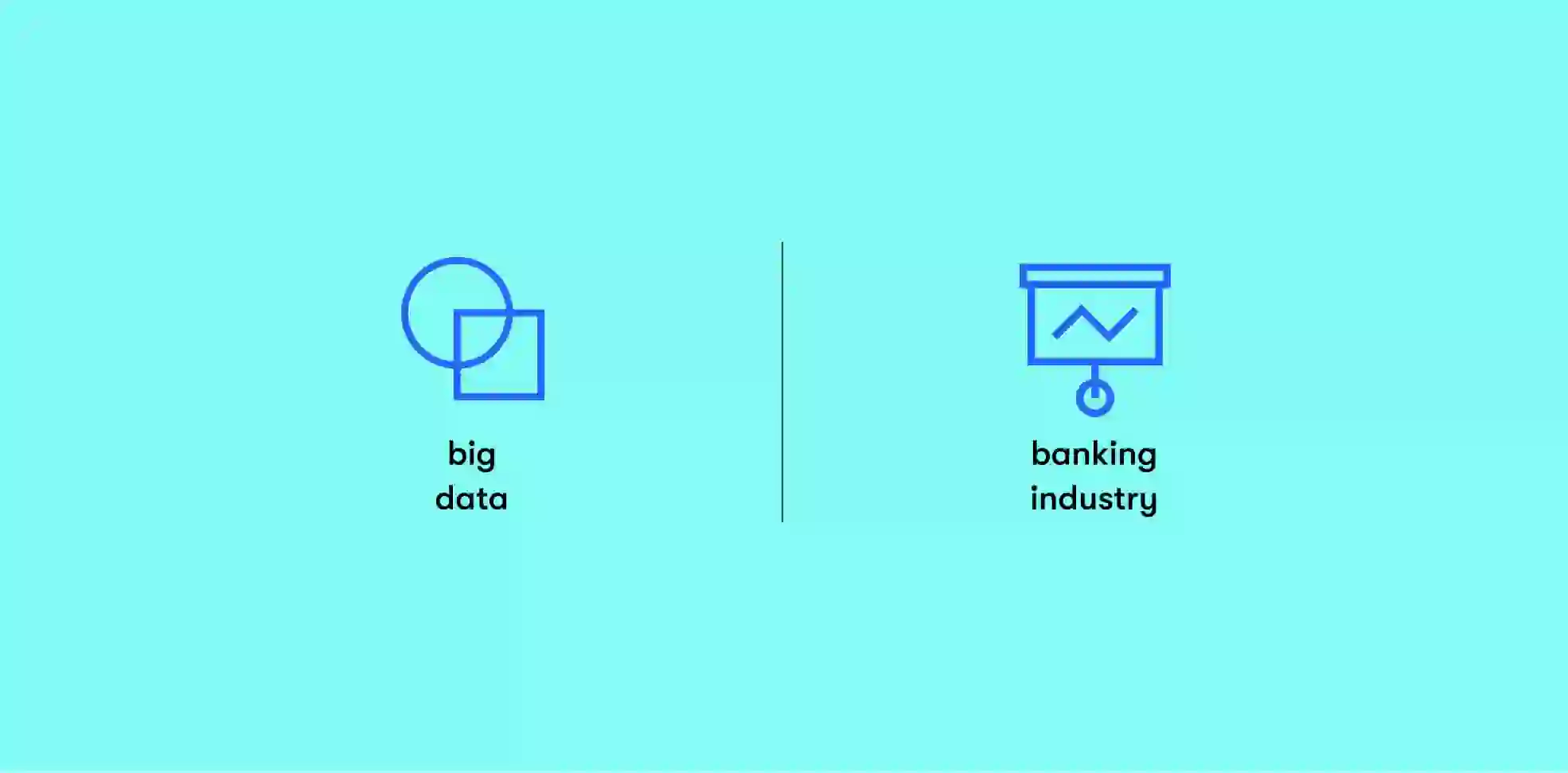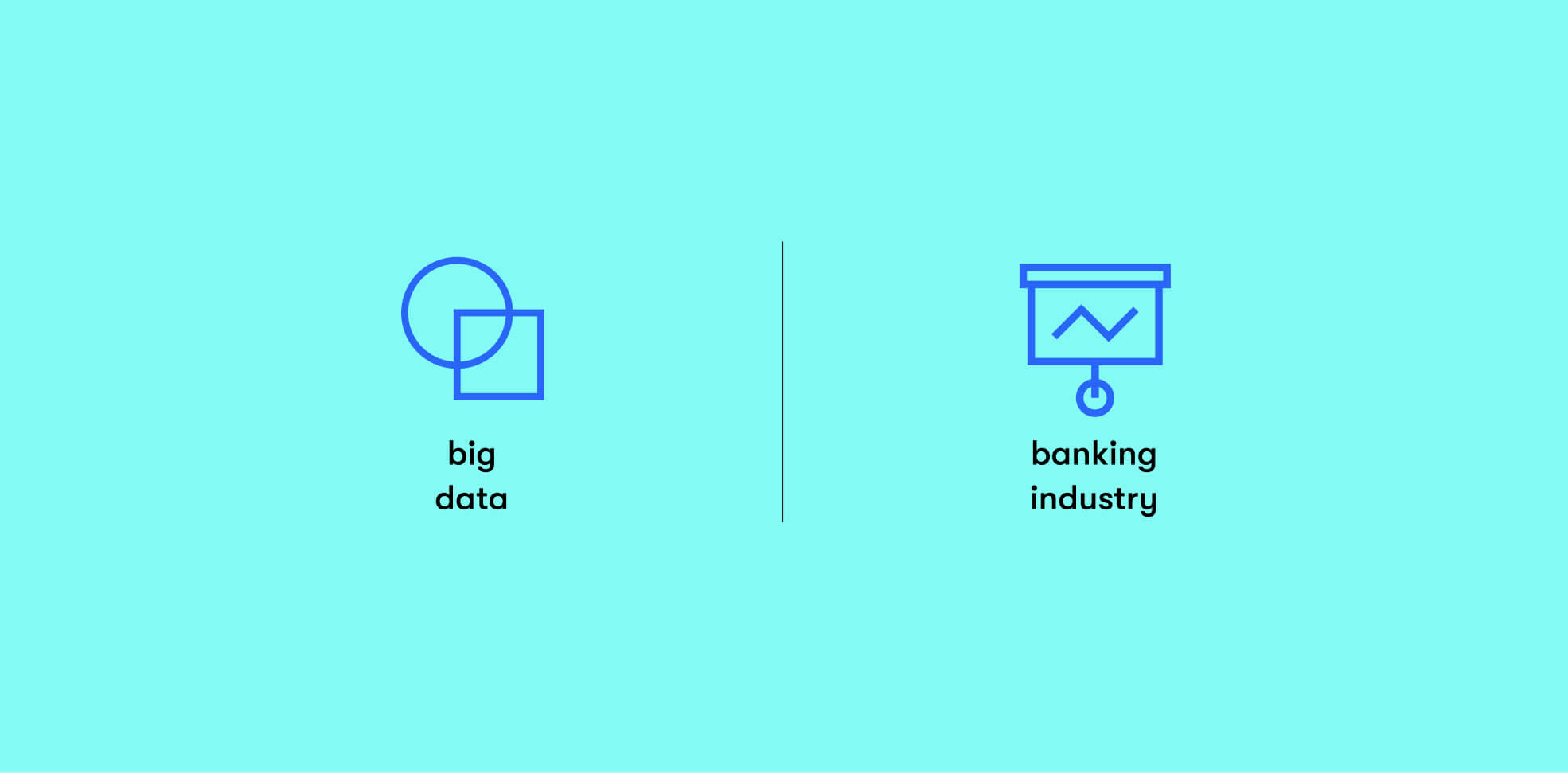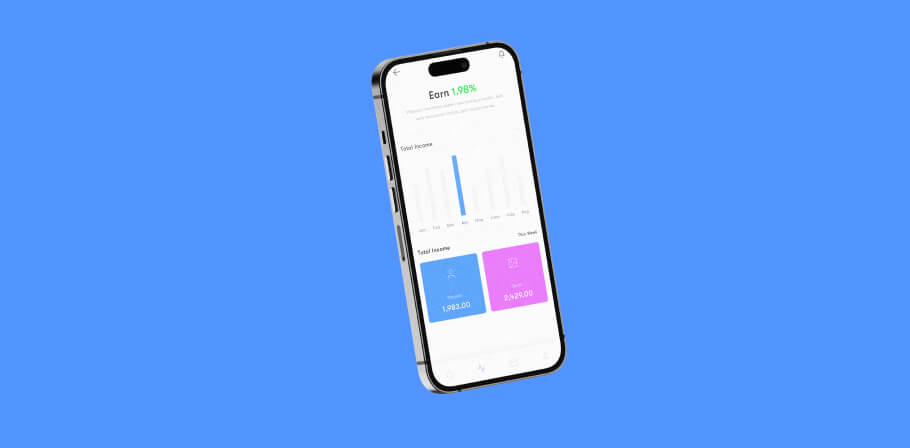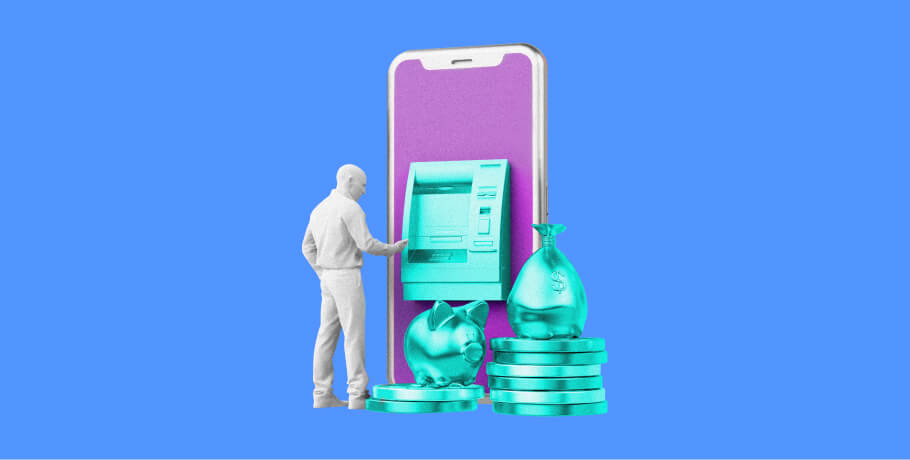“Data is the new oil” is a phrase often applied to the modern business environment. In the case of banking, you might as well add “big” to the beginning of that popular saying. Billions of transactions, along with the recording of user activity, create a vast amount of info. When monitored and analyzed correctly, it can lead to an increase in profitability, a decrease in fraudulent transactions, better customer loyalty, and more. In this article, we will show how incorporating big data into banking IT services can help banks achieve all that.
Influence of Big Data on the Banking Sector
The importance of big data for financial institutions can’t be overstated.
First, it enhances protection from illegal activities succeeding, including credit card theft, demand draft fraud, wire fraud, etc. Given that the volume of attacks (and requisite damage from successful ones) are rising, banks have to step up their efforts to address the issue.
Second, it can improve risk assessment. Despite 2021 being an extremely good year for banking (US banks reported a 90% increase in profits), there are certain issues that need to be accounted for. One example is geopolitical instability and rising interest rates — big data analysis can help anticipate and address the loan repayment issues arising from them.
The third major use of big data in banking is improving information security and regulatory compliance. On one hand, monitoring the actions of users and employee accounts can help prevent unauthorized access to funds and personal data. On the other hand, the information gathered and analyzed in this way can be automatically collated into reports for appropriate government organizations.
If you want to increase sales, prevent theft, or make shopping at your stores more fun, you need a team to implement your project. Go no further — contact us and schedule a free consultation
What is the Role of Big Data in Investment Banking?
Big data analytics in the banking market has additional benefits when it comes to investment banks.
One such benefit is detecting rogue traders before they become a problem. Even a single one can destroy an institution with hundreds of years of history (Barings bank is a textbook example), so being able to protect yourself against such a threat is not something you can ignore.
Another is investment strategy optimization. By tracking market trends and external factors, tech-savvy banks can improve their buying and selling decisions, as well as retain their commercial advantage.
Overall, it’s easy to see why big data software and application development services are in such high demand.
Benefits of Big Data in the Banking Industry to Increase Profitability
Big data and banking analytics are a reliable way to increase profitability through loss reduction, increasing staff efficiency, customer experience improvements, and more.
Fraud detection
A data-driven approach is effective for rooting out scammers, fraudsters, and other threats. This works for customers and employees alike. For example, if a person living on the US East Coast and known for frugal habits suddenly buys a new Mustang in Seattle, the system will flag it. Your employees could contact the client and verify whether this purchase is genuine. This example is very simple; big data analytics in banking can notice far more subtle triggers for suspicion.
Customer experience improvement
This is the way to both strengthen your reputation and increase upselling and cross-selling opportunities, as it is easier to do with existing customers. If you analyze the client’s activity, you will be able to understand many things about them: interests, net worth, products they might be interested in, etc.
Knowing this, you can anticipate their needs and target your advertising more precisely, gaining more conversions for less money. Or you can notice that people are having trouble finding specific features in your mobile app and redesign it in a more convenient way.
This is a common approach for many industries. Big data in eCommerce is used for the same purpose.
Automation
Why should humans have to do boring and repetitive tasks when a computer can perform them faster and more precisely? One of the top big data use cases in banking and financial services is business process automation. It allows you to save money on routine activities and refocus your staff on human-to-human conversations that attract customers.
About a third of the processes could be relegated to machines. These include document reviews, loan request processing, answering FAQs, and more.
Algorithmic trading
Computers can trade stocks faster and with more precision than flesh and blood traders. They can use the longitudinal data from previous trades, as well as unstructured data (news, reports, Elon Musk’s Twitter posts, etc.) to optimize their strategy and reliably earn money for the bank.
There are also Robo-advisors — similar algorithms designed to help individuals make better investment decisions. This can be a good source of revenue for the B2C branch of your business.
Challenges of Big Data Analytics in Banking
Big data in banking and financial services is useful, but not perfect. There are certain issues that you need to be aware of when implementing this technology.
Shiny object syndrome
When everyone around boasts about this new big thing (e.g. customer segmentation) and the massive returns it’s currently bringing, you might feel tempted to jump on the bandwagon. However, this sets you up for failure and disappointment.
First, you should decide which problem big data will solve in your business. After that, you will have an idea of what to work toward.
Wrong data
You might have the most advanced analytics in the world, but it would be useless if it works with the wrong data. “Wrong” in this case can mean many things: unreliable, unrepresentative, or biased. For example, when Boston launched Street Bump, an app to detect potholes, it got information mostly about the condition of roadways in middle-to-higher class neighborhoods, because that is where most smartphone users lived.
It takes a lot of work to find the specific information that would be meaningful for your purposes. And no one is completely safe from this error.
Privacy issues
Data privacy is a touchy subject, especially when said data is personalized and gathered en masse. There is a story about a manager at Target receiving a complaint from a man, whose teenage daughter was offered diapers and maternity wear by the chain. The manager apologized only to later find out that the girl was actually pregnant.
When a company can know more about people than they themselves do, ethical and legal issues inevitably arise. And customer data has to be thoroughly protected.
Lack of specialists
Big data in the banking sector is a relatively young field. This means that there aren’t that many people and companies with the required technical know-how, architecture knowledge, and experience to implement projects on a large scale. Even if you want to create a mobile banking app with the required capabilities.
Scale your software development team with EPAM Startups & SMBs
Data security
The vast amounts of data — it’s called “big” for a reason — are a tempting target for hackers. And a breach could potentially cost you millions in fines and compensation. So before launching a big data solution, make sure your databases are well protected.
Data integration
Big data in corporate banking can be gathered from many sources: internal software (ERPs, accounting software, HRMs, CRMs, etc.), social networks, mobile apps, news articles, etc. These sources often give out information in vastly different formats. Connecting them all to a centralized analytical system and structuring the data properly could be a challenge.
Top 5 Big Data Use Cases in Banking
Now let’s see the most popular big data applications in banking.
Client relations improvement
With big data, you will be able to segment your customers better. This carries a host of other benefits. For example, you will be able to better understand customer needs and recommend them services and products that are relevant to their situation, better protect them from unauthorized access, and address their problems quickly and efficiently. How valuable is implementing segmentation this way? More precise marketing campaigns based on big data bring 15-20% better ROI.
All of this increases customer satisfaction, and the higher that is, the better the profitability.
Risk management
The detailed analytics based on true data can help mitigate a number of different risks. It can locate dissatisfied employees ready to leave and help you restore their loyalty, saving thousands of dollars on finding a replacement. It can detect a client about to become a churn statistic and suggest ways to bring them back. It can help evaluate a new customer and flag the loans that are less likely to be returned. And this is just a sample of what big data can do.
Compliance management
Banking is one of the most regulated industries, alongside healthcare and nuclear power. Through the power of big data, you can ensure that you remain in compliance with all the required laws, including Basel III and the Dodd-Frank act. Moreover, you will be able to automate a large part of the reporting, making your employees more efficient.
Investment analysis
This is a two-pronged use case. On the one hand, big data can assist your due diligence efforts before deciding to invest in a company. On the other, it can monitor the market conditions and automatically trade stocks. Algorithms can achieve speed and precision that humans can’t, thus giving them an edge in high-frequency trading.
7 Well-known Case Studies of Big Data Analytics in Banking Sector
When someone asks how banks effectively use big data, show them this section. It contains top examples of successful application of this technology.
JPMorgan
JPMorgan is one of the largest investment banks in the world and one of the early adopters of big data in financial services and banking. The first reports came back in 2012, when it was revealed that the bank uses big data to prevent fraud and spot potential rogue traders. The exact implementation of the technology was similar to the one intelligence services use for finding terrorists. At first, it was used to find people trying to hack into the ATMs, but was later expanded to counteract internal threats as well.
Fraud prevention was only the beginning. JPMorgan is also actively using big data for deciding the creditworthiness of people applying for loans. To do that, the bank’s system analyzes internal financial reports, as well as various unstructured information: emails, social media posts, and even phone calls.
Another application is tracking market trends. Its Datawatch application provides JPMorgan’s clients with real-time market forecasts that were made based on watching the current situation from many perspectives.
And if you dig deeper, you will find every other application of big data in fintech within JPMorgan.
BNP Paribas
The largest bank in the Eurozone generates and analyzes zettabytes of data every year. The company uses it for a variety of purposes to stay ahead in the highly competitive market.
The first application of this technology is finding growth opportunities. By segmenting their existing and potential clients into distinct categories, the bank can launch surgically-precise marketing campaigns that have much higher effectiveness than usual. This data is also used to determine where to place new ATMs so that more people can access them.
Another use is fraud detection. BNP Paribas has been doing it since the early 2010s and has regularly updated it to keep pace with the changing times.
The bank also employs a cash forecasting system. Based on the gathered data, it helps BNP Paribas and its clients optimize the amount of working capital.
Citibank
Citibank was also among the first financial institutions that saw the value of big data.
The bank uses it first and foremost for customer acquisition and retention. Its system can detect clients at risk of leaving, as well as those who could be receptive to purchasing more of its products and services. So it automatically targets them with promotions.
Another use is anomaly detection. This is an umbrella term for any irregularities in customer behavior and the movement of money through their online banking accounts. It helps spot fraudulent activities, as well as erroneous charges. Dealing with such problems quickly assures customers that their money is in a safe place.
Bank of America
Bank of America is the second-largest bank in the USA, with over two trillion dollars in assets. To keep and advance its position, it uses the data it gathers to the full extent.
First off, BofA is known for its big data-powered market research platform. It uses global data to deliver insights on companies, currencies, and commodities that could be attractive to its clients as potential investments. Financial forecasts that took weeks or even months can now be completed within a day.
The second example of its usage is to gain new clients. For example, it can sell personalized emails to people who abandoned the registration process before completing it. BofA also uses an advanced chatbot that can proactively help customers solve their problems or find out the information they need.
BofA is actively experimenting with big data and AI in trading. It records and analyzes millions of individual trades and automatically adjusts company strategy to make the best deals. It also tried to use similar analytics in hiring but decided to wait until the technology is more mature. At the moment, it is often biased.
Finally, Bank of America detects fraud using big data. The system locates anomalies and lets the employees know about them. Once the suspicious transaction is checked, the bank can make a decision. The advantage of such an approach is its user-friendliness: if the alert turns out to be a false positive, the customer will not be distracted.
Wells Fargo & Co.
Another giant with almost 2 trillion dollars in assets, Wells Fargo considers big data an important factor in its continued success.
For example, it uses this technology to personalize its approach to customers.
“When a new customer of Wells Fargo bank opens an account with a savings product, if they get the experience right, then we will accomplish multiple objectives. Customers will really look at us as a bank of choice; and as their financial needs evolve and emerge, they are more likely to look at the bank for requirements like a credit card or maybe overtake a home loan. If we give the right experience from the inception, customers are more likely to choose us for their next set of needs. That will add to the overall lifetime value of the relationship,” said Prahalad Thota, Head of Enterprise Analytics & Data Science at Wells Fargo & Co.
Capital One
Capital One ranks as one of the Top-10 banks in the USA. It is also one of the financial institutions with the most advanced big data programs.
The bank uses it first and foremost to offer personalized services and thus attract new customers while keeping the ones they already have. By using targeted promotions, interest rate data, and various custom incentives, it managed to increase client retention by 87%. Big data was also responsible for decreasing client acquisition costs by a whopping 83%.
Another notable application of big data is the bank’s internal ecosystem. It is a sort of “marketplace” that is accessible to over 7.000 analysts working for it, making all the necessary financial information available in a couple of clicks.
Deutsche Bank
The German financial institution approached big data analytics in the banking industry with the appropriate seriousness. Its internal “Data Factory” and Data Innovation Group are some of the most innovative on the planet.
For example, they have implemented an original stock market analytics system that quantifies the more ephemeral things that can affect stock prices. These include environmental effects, governance, human capital, and other factors. To give a more accurate estimate, it checks the official financial reports as well as social media posts, news articles, etc.
Like many other businesses, it also uses big data for fraud prevention and customizing its offerings for customers.
CREATE YOUR TOP FINTECH APP WITH US
Hire middle and senior fintech software developers in weeks, not months
Key Points to Remember to Make Big Data Implementation in Banking Spot On
Big data in retail banking and commercial banking is serious business, so to implement it correctly you’ve got to approach the process carefully. Here are some pointers to make big data implementation in banking smoother and more effective.
Prioritize customer service
Loyal customers are your greatest asset. Retaining them and acquiring more should be your top priority. Fortunately, big data is able to help in this regard. But if you are uncertain where exactly to start or don’t have the budget for several new IT projects, prioritize customers. This will earn you the money for other activities.
Use what you have
Rome wasn’t built in a day, and neither were successful big data projects. Moreover, before there was a Coliseum, there were huts. So before trying to launch an all-encompassing solution, focus on analyzing the data you already have. It is easier, it will start bringing value quicker, and it will teach your team the basics they need.
Account for legacy systems
Unless you are starting a new bank, you will probably already have certain software in place. These will contain some sort of data already, and replacing them would only add costs. So instead of leaving them out of the loop, implement extra APIs that would let your new solution interact with the old.
Think about what you gather
To make your big data analytics useful, it must be founded on reliable data that is relevant to the matter at hand. While it might be tempting to include everything at once, focus on things that are closer to the primary problem you are solving. You can always expand later.
Future of Big Data Analytics in the Banking Sector
Judging by the current situation, big data and banking are tied together for the foreseeable future. Although their relationship will change somewhat as we proceed.
“Data fabric” will become a new trend and a new buzzword. It means a comprehensive system that can access many external data points in real-time. With it, banks and credit unions will be able to get information and relay it to their customers in the blink of an eye. The reliability will also improve.
Another important thing would be a more transparent approach to AI. Artificial intelligence is a critical component of big data solutions, as it is necessary for analyzing the vast amounts of gathered information. However, its algorithms are often a black box. In the future, they are going to become more open, which would lead to additional improvements and higher ROI.
EPAM's Contributions to Big Data in Banking
Big data analytics in retail banking is something EPAM team work with regularly.
A good case study of big data analytics in the banking sector is freeME — an investment app for Glarner Kantonalbank (GLKB), a Swiss financial institution. The application was designed to help people manage their personal finances and independently save for retirement. It quickly provides market data and gives users investment advice.
Another notable case is working with Telefónica Germany, one of the largest telecom operators in the world. The company needed a big data platform to analyze unstructured information. EPAM's team delivered one that speeded up their processing tenfold.
Conclusion
Big data is a way to improve your bank in many ways: attract more customers, serve the existing ones better, make employees more efficient, and prevent fraud. It is not perfect, as with the wrong information and a slack approach to data privacy a project might result in failure. But with the technical expertise of EPAM Startups & SMBs, you’ll be in a position to complete your objectives and start seeing some real ROI within the shortest time frame.
Scale your software development team with EPAM Startups & SMBs
FAQ

Expert digital communicator and editor providing insights and research-based guides for technology buyers globally.
Expert digital communicator and editor providing insights and research-based guides for technology buyers globally.
Explore our Editorial Policy to learn more about our standards for content creation.
read more



















